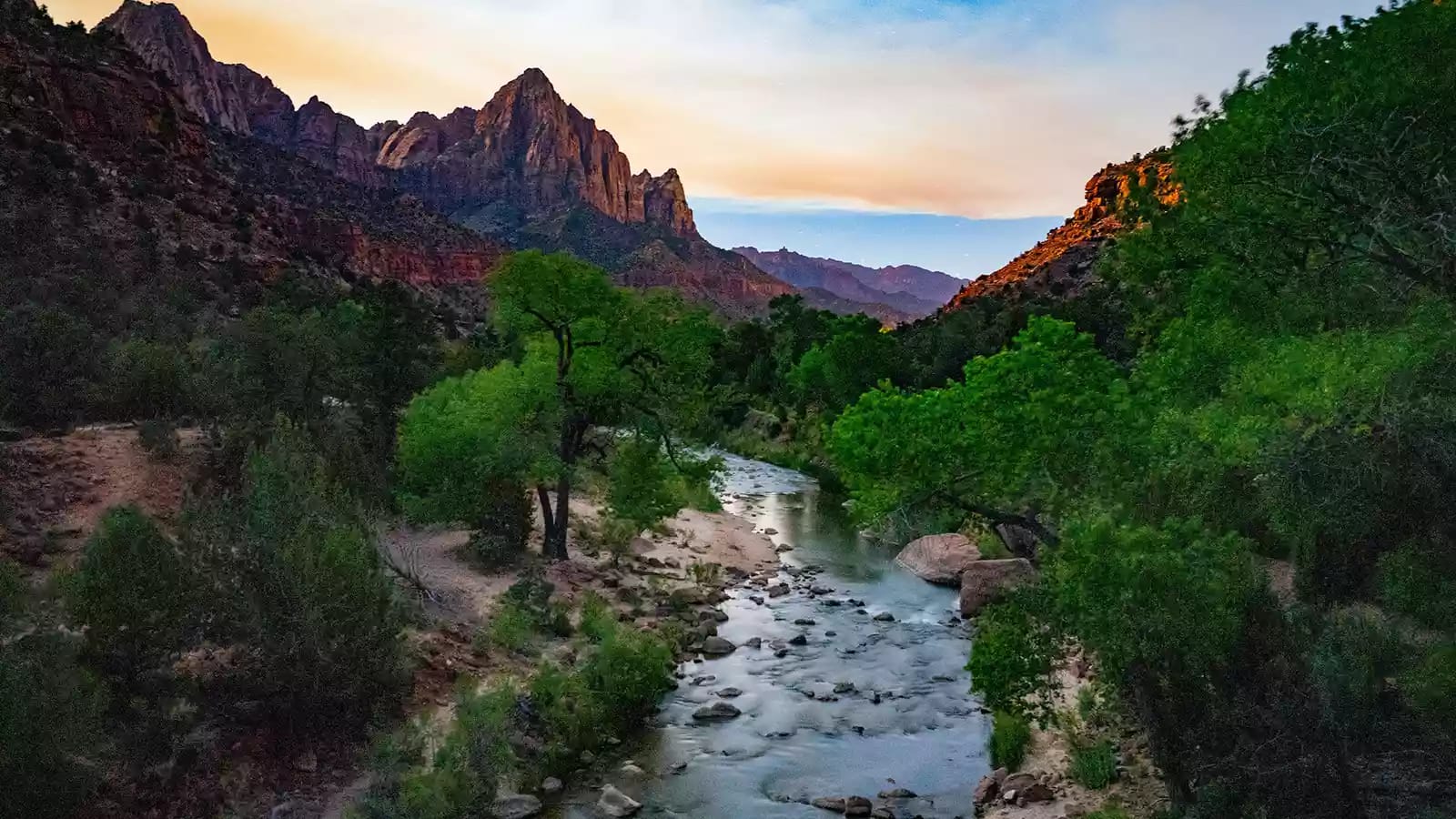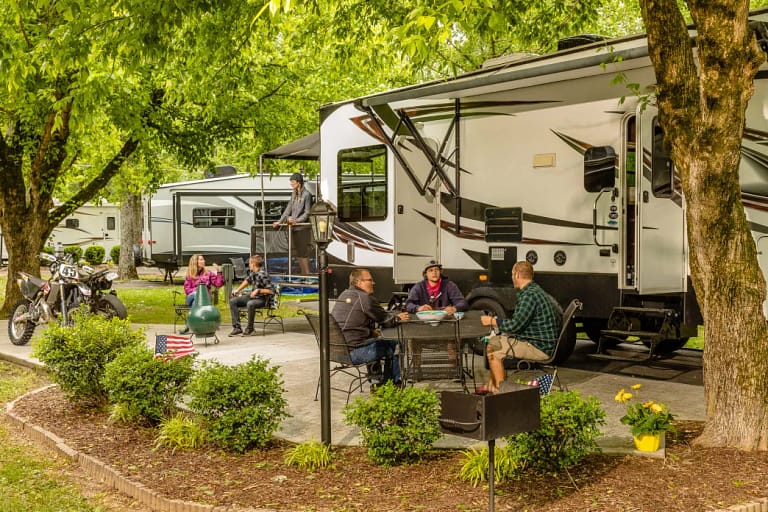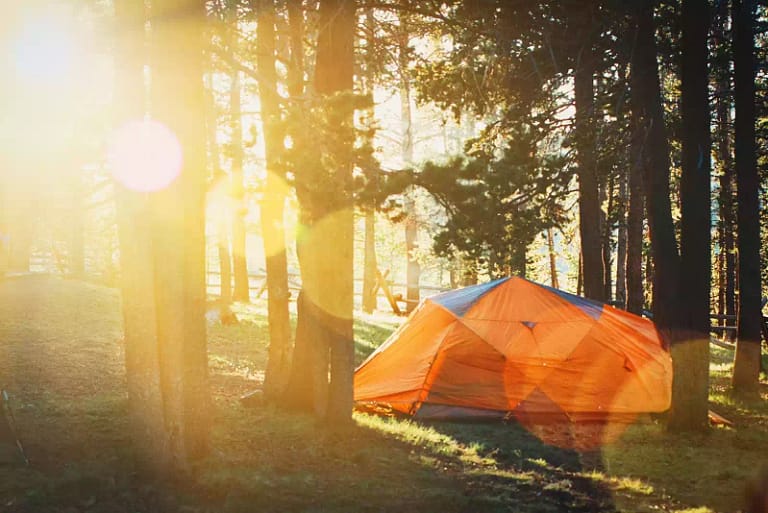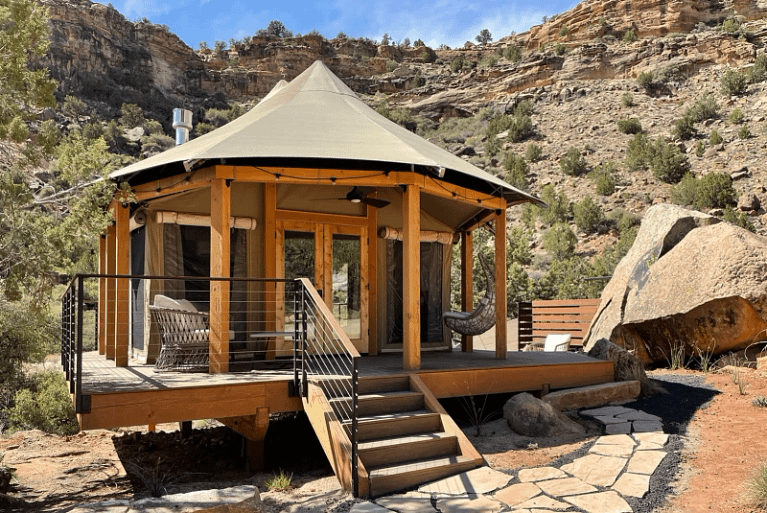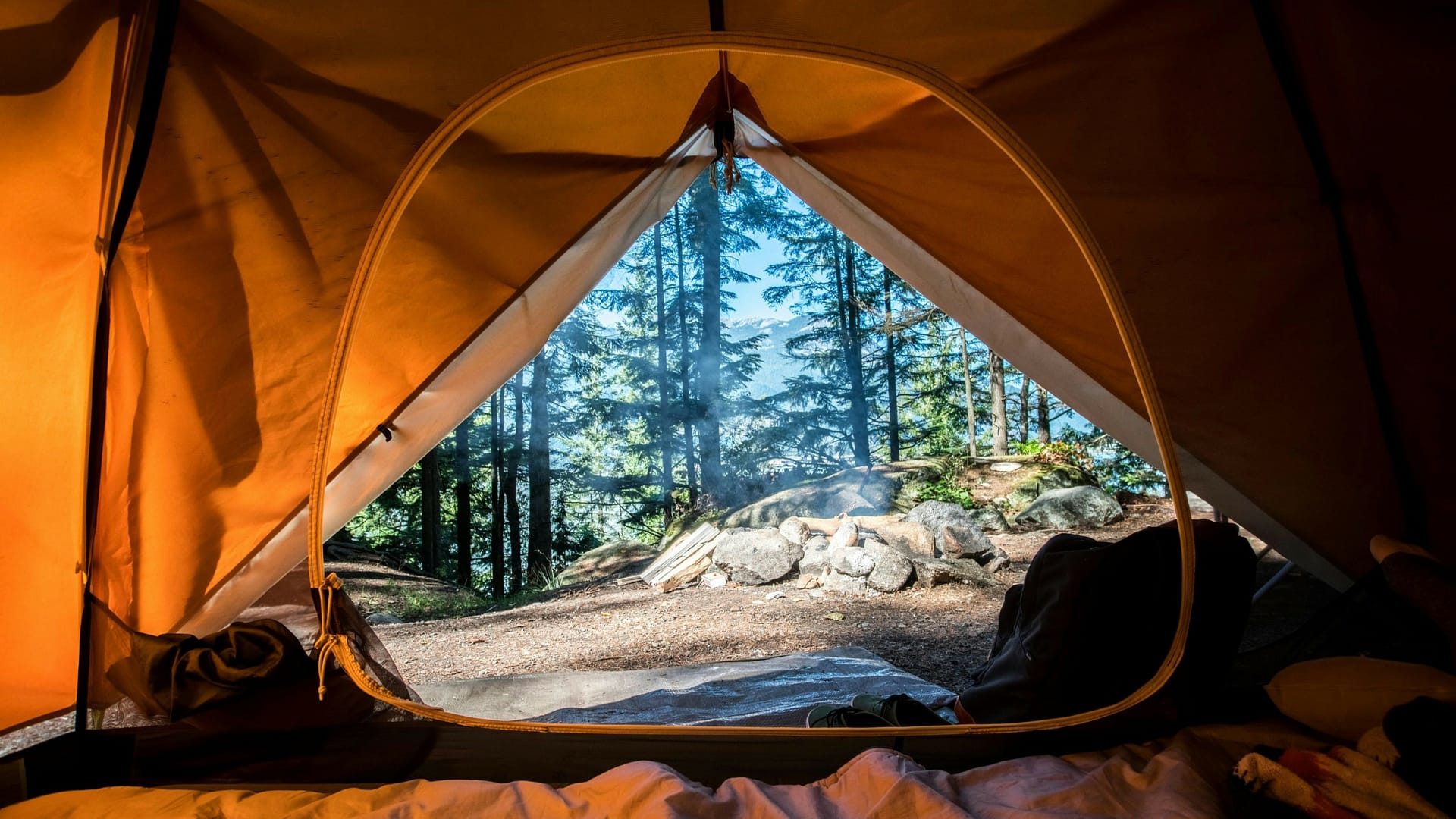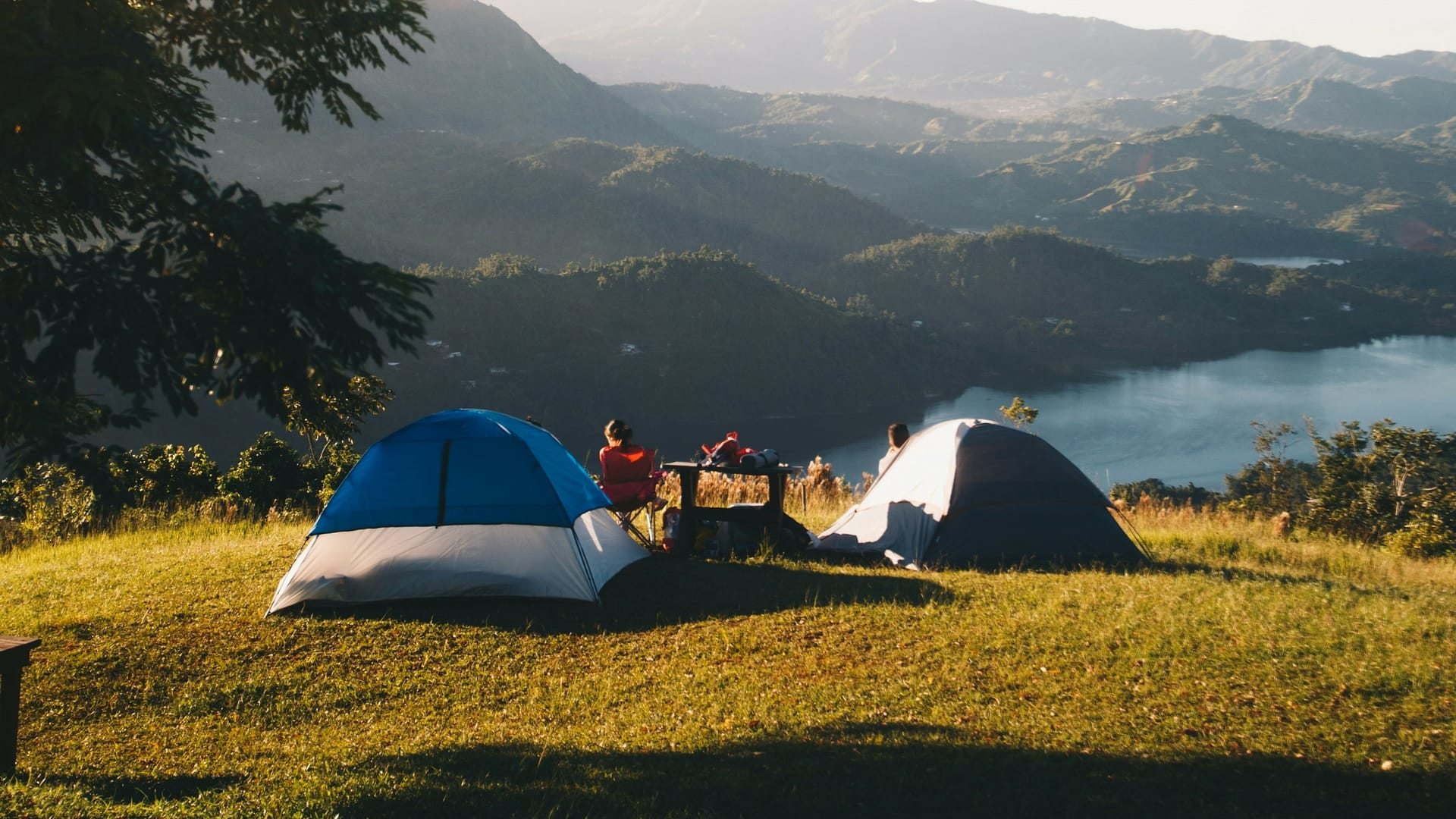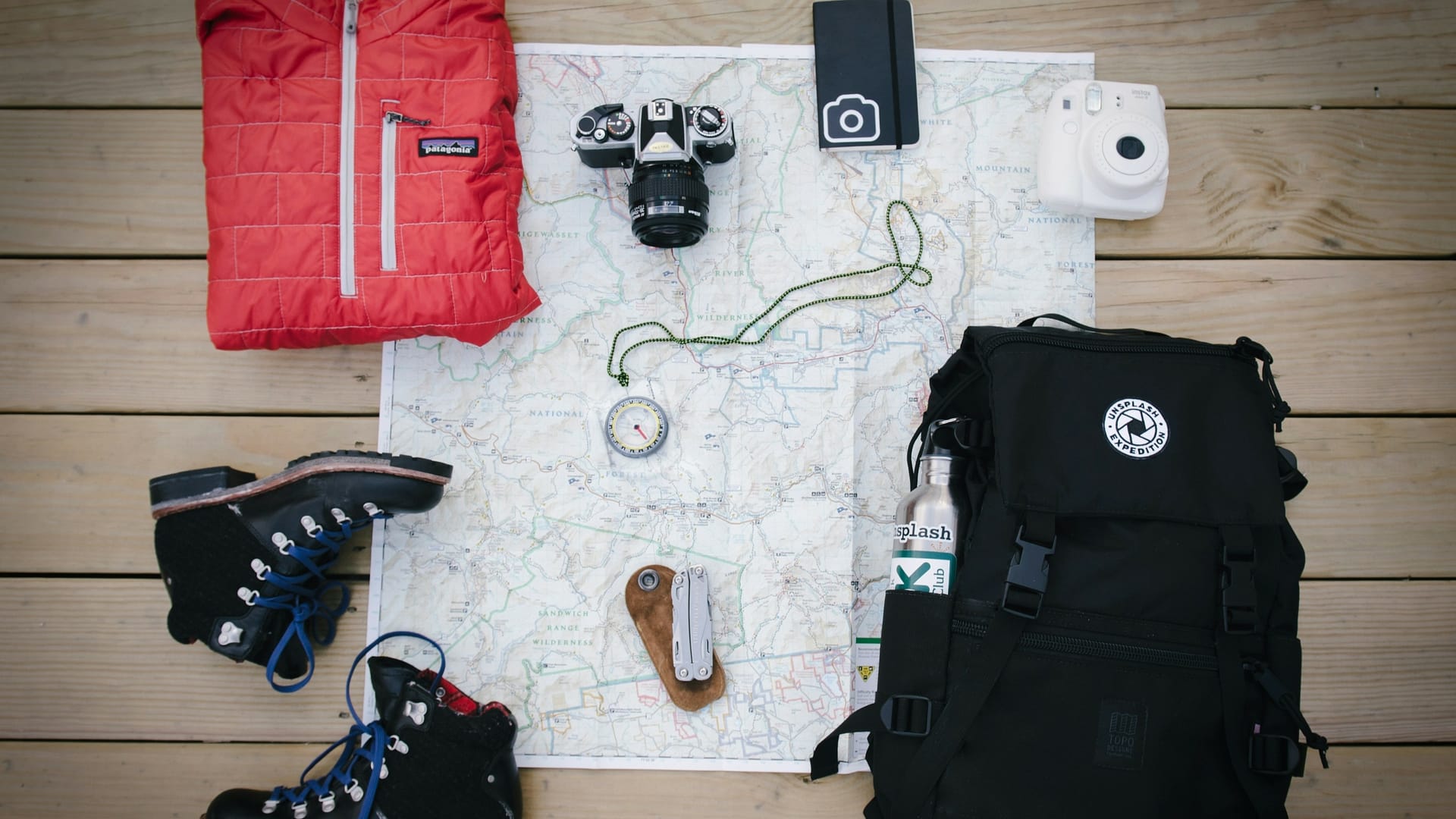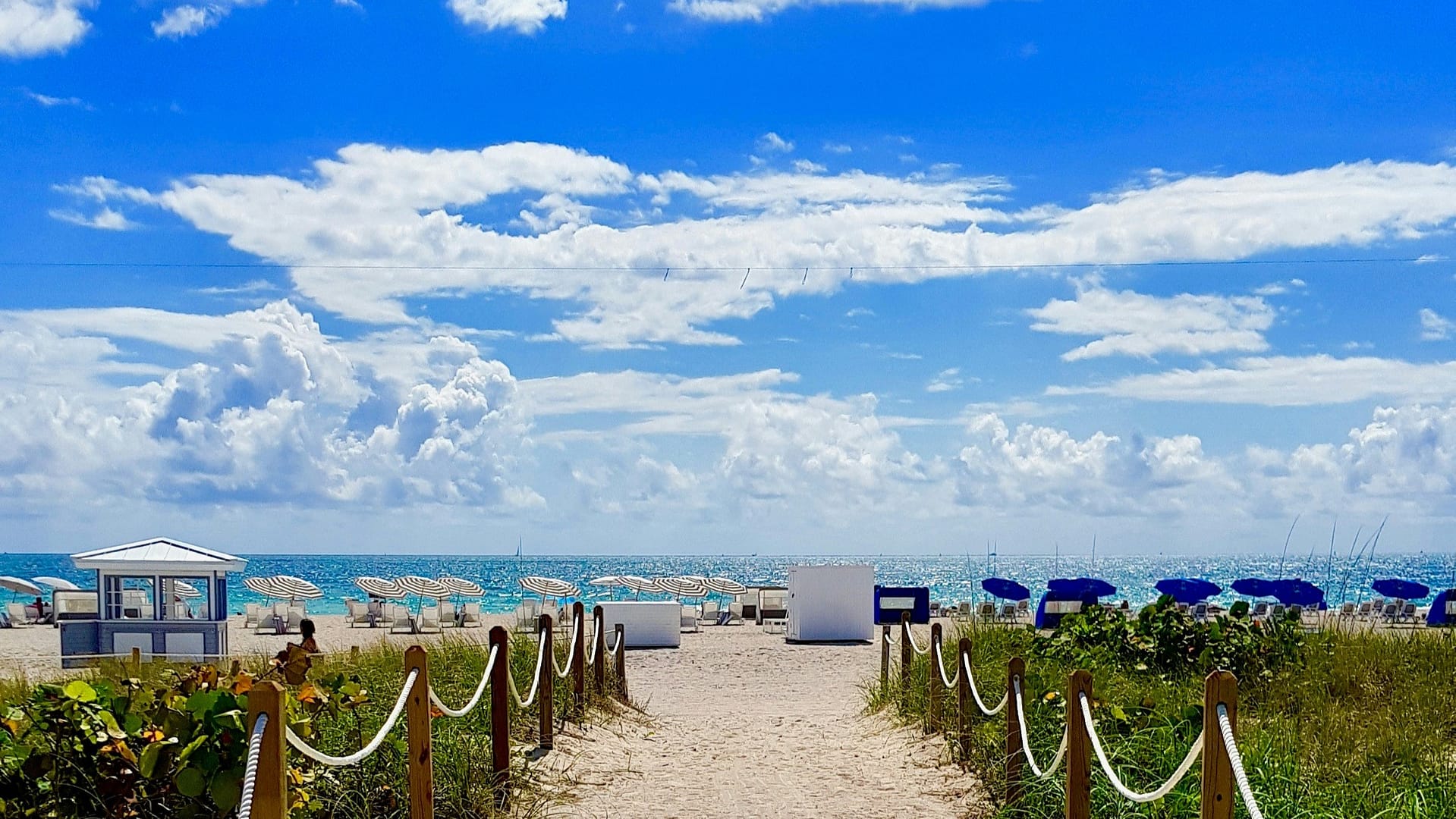For the past decade, Zion National Park in southwest Utah has welcomed an average of 3 to 5 million annual visitors. This ranks it among the most popular of all national parks. Consider this statistic a testament to the park’s outstanding natural beauty and your first indication that you need to make a reservation asap for camping near Zion.
With all those visitors, it’s good news that there are plenty of campground options in and around Zion National Park. There are many and varied campgrounds within a short drive of the park entrance for tent camping, RVing, and glamping, as well as some in-park camping options. Location, amenities, and camping style are the main considerations when you’re seeking the best camping in Zion national park.
Stop us if you’ve heard this one before: The No. 1 factor for camping at Zion (or at any popular national park) is planning ahead and getting a reservation as early as you can. This is especially true if you’re fussy about your campsite or have particular demands, such as wanting only a full-hookup, shaded, pull-through site for RV camping near Zion National Park or a fancy glamping spot with a king-sized bed under the stars. Your vision of pitching a tent in total solitude with direct views of ancient red sandstone canyons can absolutely become reality – but it’s not so likely if you wait until the last minute to track down that glorious campsite.
In this article:
ToggleWhere to Camp Near Zion National Park
Zion National Park feels remote with its unspoiled landscape dominated by canyons, buttes, monoliths, and mesas sculpted over millennia. Its spectacular setting at the geographic junction of the Mojave Desert, Colorado Plateau, and Great Basin (some 300 miles from Salt Lake City) also gives the park a far-flung and timeless vibe. Many of the choices for tent camping, RVing, and glamping near Zion embrace this off-the-grid wilderness ambiance.
Balancing this, Zion is relatively close to a number of urban hubs, including the sizeable city of St. George, about 45 miles to the southwest, and the gateway town of Springdale. The town of Rockville is just 10 miles from the park entrance, and the Hurricane Valley offers many conveniences on the road between Zion and the Grand Canyon’s (seasonal) North Rim, 100 miles to the south. If you prefer to have easy access to conveniences like nearby restaurants and stores, the best camping near Zion will be found in or around one of these towns or cities.
Camping Inside Zion National Park
Inside Zion National Park are three campgrounds. The main campground next to the visitor center is open year-round, with 117 sites for tents and RVs. It features flush toilets, drinking water, and a picnic table and fire pit at each site but has no showers or RV hookups. Reservations, available up to six months in advance, are recommended. The park service states the campground is typically full every night from mid-March to late-November. The two smaller campgrounds are open in summer only. Backpackers may also camp overnight in the Zion backcountry. Permits are required.
Commercial Campgrounds Near Zion National Park
Commercial campgrounds near Zion National Park present the widest range of camping options. This is the best category of campgrounds to search if you want anything other than rustic tent camping or dry sites for RV camping. Full RV hookups, glamping, family activities, and more deluxe amenities like swimming pools, on-site dining, and laundry rooms are generally only available at commercial campgrounds. Look in and around St. George, Springdale, Rockville, and Hurricane.
Public Campgrounds Around Zion National Park
In addition to the limited camping options inside Zion National Park, other public lands in the vicinity of the park offer low-cost, mostly rustic campgrounds. Skip these if you’re looking for glamping. Places for camping include state parks, BLM-managed lands, and Dixie National Forest, with options for both developed campgrounds and dispersed camping.
The BLM manages two small developed campgrounds near Zion: one in the Red Cliffs Recreation Area and one in the Baker Dam Recreation Area. Contact the BLM’s St. George Field Office for advice about dispersed camping on public lands near Zion. Dixie National Forest, which is adjacent to Zion National Park on its northeast side, offers cabin rentals, developed campgrounds, and dispersed camping for tents and RVs.
Utah State Parks with campgrounds that are close enough to Zion to be a convenient home base – as well as beautiful destinations in their own right – are Snow Canyon State Park, Coral Pink Sand Dunes State Park, and Sand Hollow State Park. These are great choices for tent and RV camping near Zion National Park. Some state park campsites have full or partial RV hookups plus hot showers.
Tent Camping Near Zion National Park
Tent camping in and around Zion National Park is very popular, and for good reason. The scenery and dark night skies are spectacular, and the climate is nearly always suitable for tent camping (depending on how you feel about extreme mid-summer heat and below-freezing temps in winter). Plus, tent campers have the widest and least expensive range of campground options compared to RV campers and glampers. Tent campers have a choice of quiet, hike-in spots with few to no amenities and secluded sites, as well as larger campgrounds and resorts with ample facilities. Backcountry camping and dispersed camping near Zion are also available to tent campers who are happy to be self-sufficient.
What to Bring
Tent campers are more vulnerable to the Zion region’s extreme temperatures than other campers. The heat can make camping uncomfortable in peak summer months, so seek campsites with shade or bring your own canopy. Plentiful water supplies are essential as well, especially if you’re opting for a more primitive style of tent camping near Zion.
The region’s wildlife means tent campers need to prepare for safe food storage. Check to see if your campground has bear lockers; otherwise, prepare to keep all food and scented items inside a vehicle or bear-proof canisters. Brush up on how to be bear aware and set up a safe camp.
As a desert region, there are often fire restrictions in place around Zion. Check local fire restrictions frequently, and bring a propane camp stove to use for cooking whenever charcoal or wood fires are banned.
Glamping Near Zion National Park
The Zion region has really embraced glamping (and why not?) and presents an impressive range of options for the fancier camping folk out there. The Hurricane Valley, in particular, is a hub of glamping resorts, including some with wide-open ranch or mesa settings as sought-after features. Several Zion-area glamping resorts promote their vast, unspoiled acreage where you can hike, and some feature lakes that invite swimming or paddle-boarding.
Accommodations might comprise safari-style canvas tents, tipis, yurts, or covered wagons furnished with king- or queen-sized beds and wood-burning stoves. More traditional cabins are available at campgrounds near Zion, too. Some options have private bathrooms, while others share relatively fancy bathhouses stocked with nice toiletries. Some lodgings have indoor or outdoor kitchens. A few other high-end features to look for in Zion National Park glamping include complimentary tea and coffee, s’mores kits by the fire pits, bike rentals, yoga areas, hot tubs, and daily housekeeping.
What to Bring
Your packing list for glamping near Zion National Park might be quite short – after all, the beauty of glamping is that all the comforts of home are provided for you. However, the more spacious lodgings and sometimes kitchens provide plenty of storage space, should you want to pack an enormous suitcase and fully stocked cooler. If you plan to cook your own meals, look into what kitchen equipment is and is not provided. You might want to bring a few of your own kitchen tools.
Some glamping resorts near Zion advertise WiFi as a handy feature, whereas others promote their absence of WiFi as an asset. Choose wisely if you have a strong preference for or against staying connected. Consider sneaking in a mobile hotspot or signal booster, if needed.
Full-Hookup Zion National Park RV Camping
Zion National Park’s own campsites do welcome RVs up to 40 feet but do not have any hookups. A few full hookup sites are available in nearby state parks, but if you are seeking an RV campground near Zion National Park with full hookups, commercial campgrounds will be your best bet. There are plenty of options, assuming you’re taking our advice and planning well ahead of time. Locations range from the heart of St. George, where you can walk to one of dozens of restaurants and cater to every need, to more remote, quieter settings with views of red rock formations and amazing night skies. The larger RV campgrounds near Zion National Park offer many choices for back-in or pull-through sites, sites for big rigs, and a wider range of amenities.
What to Bring
Your typical RV packing list is likely to be ideal for camping near Zion National Park, but do consider the season and potential for extreme heat or cold. Bring extra blankets in winter, fans, and shades in summer, and make sure your vehicle’s heating and a/c are in tip-top shape.
Things to Do While Camping at Zion National Park
It’s entirely possible to experience the highlights of Zion National Park with a one-day visit, but two or more days will allow you to explore more thoroughly and pursue some of the more popular activities. Start at the visitor center, and at a minimum, take a driving tour or ride the free shuttle that runs up and down Zion Canyon. The following things to do while camping at Zion National Park all promise to make your visit especially memorable.
Hiking
You can see a lot of Zion’s most majestic scenery from your vehicle or shuttle bus, but exploring on foot is almost essential. The most accessible trails for day hikes are in Zion Canyon, with trailheads accessed via the shuttle. More than a dozen trails range from less than half a mile on a paved track, to full-day, 10-mile routes with major elevation gain and steep cliffs. Hiking boots are essential for tougher hikes, but some of the easier trails are safe to hike with sturdy walking shoes or athletic footwear.
One of the most iconic hikes in Zion is The Narrows, the most compact part of Zion Canyon with rock walls a thousand feet tall. You can hike a small section without getting your feet wet, but a longer hike means wading upstream in the Virgin River. The nature of the experience depends largely on the water level and temperature, which can change quickly. The water is warmer and lower in summer and early fall, but flash floods are a risk at this time, too. Check the current conditions immediately before any hike up The Narrows.
Another Zion icon – Angels Landing – is so popular it requires a hiking permit, which gives you a time slot for tackling the strenuous final ascent along a knife-edge ridge and up a metal chain. This hike is amazing for the photo ops and adrenaline but only suited to fit and experienced hikers who don’t fear heights.
Other regions of the park where you can access more diverse trails and escape the crowds are Kolob Canyons in the northwest corner; Kolob Terrace at higher elevations in the center part of the park; the also-high East Rim Area; and the low-elevation Southwest Desert in the southwest corner of Zion. Experienced hikers should look into longer hikes in the Zion Wilderness. Overnight trips require a wilderness permit.
Biking
Biking is allowed on all park roadways, with the exception of the Zion-Mt Carmel Tunnel, as well as the multi-use Pa’rus Trail. This paved trail runs 1.75 miles alongside the Virgin River, connecting the visitor center to Zion Canyon Scenic Drive. Other park roads feature steep grades, narrow sections, and tight turns, so use caution if you plan to ride a bike along these routes. The park’s shuttle buses are equipped to carry bikes on their front racks, and there are bike racks at the visitor center, and shuttle stops.
Photography
All of Zion National Park is a photographer’s dream, but sunset and stargazing are especially inspiring to anyone with a camera. While the final dip of the sun is concealed behind mountains, on its descent, it creates a vivid, otherworldly orange glow upon Zion’s sandstone cliffs. Some prime sites for sunset (and sunrise) photography include the museum patio, where you can capture views of Bridge Mountain and East Temple. The Kolob Canyons Viewpoint is also glorious. So are Zion’s exceptionally dark night skies, which promise potential shots of the Milky Way.
Horseback Riding
Guided horseback trips in Zion National Park are available from March through October through a park concessionaire. If you’re bringing your own horses, know that permits are not required for day trips, and the park offers more than a dozen stock trails. Pick up a wilderness map at the visitor center. There are also a few select areas where off-trail riding is permitted. Zion has one overnight stock camp, and a wilderness permit is required for its use.
Rock Climbing
Zion’s 2,000-foot sandstone cliffs present amazing opportunities for big wall climbs, but climbing in the park is recommended only for experienced and properly equipped climbers. Commercial guiding is not allowed in the park, so climbers are responsible for following all regulations. March to May and September to early November are the best seasons for climbing in Zion, as they avoid extreme heat and monsoon rains. Check for seasonal cliff closures for raptor protection.
Canyoneering is popular in Zion National Park, too – in fact, the park is one of the top spots in the nation for the extreme sport. There are routes available for beginners as well as experienced canyoneers, but you need at least basic skills before tackling this exciting combination of swimming, hiking, and rappelling in Zion. Wilderness permits are required for all technical canyoneering trips, and of course, you will look up and follow all the rules.
Ready for Camping Near Zion National Park?
Zion National Park’s popularity means you’ll have to share its amazing scenery, trails, and activities with others. It means crowds and fully-booked campsites during the high season. But don’t let this put you off planning a camping trip near Zion. They’re all there because it’s such a remarkable place to camp and explore. Join them!
With enough research and common sense, you’ll find that the best camping in Zion National Park – whatever that means to you – is readily available. Zion National Park RV camping, tent camping, and glamping experiences all await.
Zion Camping FAQs
Can you camp in Zion National Park?
Yes! Zion National Park has one year-round campground and two smaller seasonal ones. The camping style is rustic, with flushing toilets, picnic tables, and fire pits, but no showers or hookups. You can also camp in the backcountry with a permit.
In-park camping is limited and popular, so make a reservation as early as you can – they’re available up to six months in advance. Fortunately, there are plenty of campgrounds within easy reach of Zion as well. For full hookup RV sites near Zion and glamping experiences, you have to look outside the park.
Can you drive an RV through Zion National Park?
This is a bit complicated. To traverse Scenic Route 9, or the Zion-Mt. Carmel Highway, which is the only road cutting through the park from east to west, you must pass through the historic Zion-Mt. Carmel Tunnel. The tunnel is narrow with a low ceiling, and the park enforces traffic controls for larger vehicles that convert the tunnel to one-way traffic during certain hours.
If your RV is over 13 feet, 1 inch tall, over 40 feet long (single vehicle), or 50 feet (combined trailer and towing vehicle), you may not drive it through the tunnel. Alternative, longer routes are available outside the park to reach its eastern side. If your RV is smaller than the maximum but over 7 feet, 10 inches wide, or 11 feet, 4 inches long, you are allowed to drive it through the tunnel. Get the vehicle measured by a ranger at the park entrance and purchase a $15 permit before driving through the tunnel.
Further, the scenic drive is winding and includes narrow switchbacks, so if you’re nervous about driving an RV on such a road, consider skipping it.
Also, note that the Zion Canyon Scenic Drive is closed to all private vehicles – RVs and cars included – when the shuttles are running. This is daily from March to November and less frequently during the off-season. Check the schedule at the visitor center.
Are dogs allowed in Zion National Park?
Yes, dogs are allowed in Zion National Park but must be on a leash no longer than 6 feet and only in certain places. Dogs are allowed in campgrounds, on public roads, in parking areas, picnic areas, and the grounds of the Zion Lodge. They are not allowed on shuttle buses, in public buildings, wilderness areas, or on any trails, with the exception of the Pa’rus Trail.
What is the best time of year to visit Zion National Park?
Zion has four distinct seasons, with the mildest weather from April to mid-June and August to mid-October. Highs average 95 to 100+ F from June through August and often drop below freezing from November through March. The spring and fall shoulder seasons are great for camping but can be changeable with temperature drops of over 30 F from day to night.
Winter visits are the best for avoiding crowds, but it’s cold, and some trails are likely to be closed due to ice hazards. Spring offers wildflowers, but The Narrows is often closed due to high water flow. In fall you can admire fall foliage at higher elevations. May through September is hot, busy, and dry. Flash floods are a risk during the summer monsoon season of July to September.
You’ll need to consider all the factors above along with your personal preferences to determine when is the best time of year to visit Zion National Park.

